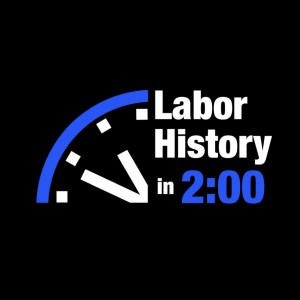

On this day in labor history, the year was 1943.
That was the day 50,000 striking rubber workers ended their 5-day walkout in Akron, Ohio.
It was World War II and the no-strike pledge was in full effect.
Bosses were awash in defense contract profits.
At the same time, they used the no-strike pledge to violate collective bargaining agreements, crank up assembly line production and ignore grievances.
As one sympathetic headline read, “Workers Forced to Strike in Defense of Their Living Standards Slashed by Soaring Prices, Taxes and Anti-Union Profiteers.”
Workers at Goodyear, Firestone and Goodrich had petitioned the War Labor Board for an 8 cent raise and shift differentials they were entitled to per the Little Steel Formula.
For a year, they waited patiently and were outraged when they learned the Board had only granted a 3-cent raise.
Firestone and Goodrich workers threw down their tools immediately and poured out of the factories.
Goodyear workers soon followed.
In a protest telegram to the Board, United Rubber Workers leaders pointed out that living costs had increased by 23% since January 1941.
They also noted that essential to maintaining the no-strike agreement was a just settlement of grievances and a $25,000 cap on executive salaries, neither of which had been adhered to.
The walkout was one of the first major challenges to the no-strike pledge.
Women took the lead as picket captains and dispatchers.
Their leadership was accepted without question.
Flying pickets cruised the city to enforce picket lines.
Black workers at Firestone, impressed by the union’s fight for equal rights, figured prominently in the strike.
Workers returned to the job with their spirits high, having forced the Board to reconsider their demands.
More Episodes
All Episodes>>You may also like
Create Your Podcast In Minutes
- Full-featured podcast site
- Unlimited storage and bandwidth
- Comprehensive podcast stats
- Distribute to Apple Podcasts, Spotify, and more
- Make money with your podcast











